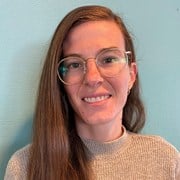Because of the increasing demand for healthy fish and seafood aquaculture has become the fastest-growing food production sector. However, two major challenges stand in the way of sustainable growth: finding alternative, eco-friendly sources of protein and fatty acids for fish feed and improving the way fish farms handle side-streams. To make fish farming more sustainable, innovative solutions need to be implemented where circularity and re-valorisation are central elements.
The aim for this project will be to investigate the possiblity to integrate a microalgae module to exsisting and future recirculating aquaculture systems (RAS) to transform sidestreams into valuable resources. The reactor will cultivate a naturally occurring biofilm community from the nutrient-rich water in fish farms. The naturally occuring microbial community will be highly adapted to the water profile and will there be the best candidate for cleaning the water while producing a useful biomass that can be repurposed in agriculture and food production.
Once harvested, we will test the biomass and its feasability as a possible sustainable feed ingredient. This project tackles key challenges in aquaculture, such as high production costs, system integration, and the environmental footprint of fish farming.

